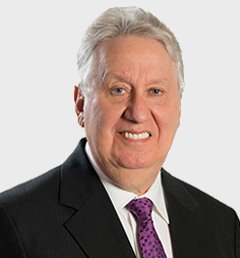Estate litigation lawyers have to keep a close eye on the scales of justice. In essence, the responsibility as to who has to prove what, keeps swinging back and forth throughout a trial.
Perhaps this blog is a little too technical, but I thought it might be helpful for those considering launching a Will challenge to appreciate how complex and sand shifting the responsibilities are. Using an American term an estate litigation attorney when facing a Will challenge, has to follow a cascade of steps in determining whether or not there is likely going to be a successful result at the end. The one thing that is certain is that it is extremely expensive, and the results are uncertain. In the spring of 2024, the Ontario Court of Appeal upheld the fall 2022 trial decision of Madam Justice Tamara Sugunasiri.
Interestingly, Justice Sugunasiri had only been a judge for a few months by the time this interesting and hard-fought matter came before her. It required a three week trial and apparently no stone was left unturned. An appeal was launched and failed.
As Justice Sungunasiri observed, this was a family given to hyperbole and at times pigheadedness.
The steps set out in Roe v. Roe are as follows:
a. Did the willmaker aka the testator have testamentary capacity. This test goes all the way back to the 1870 English Queens Bench case in Banks v. Goodfellow. For a further summary of what is testamentary capacity, take a look at our blog titled:
Exotic Attacks on Will Validity – The Usual vs. The Unusual and
b. Did the willmaker have testamentary capacity at the time that he or she instructed the lawyer to prepare the Will, and when the Will was signed.
c. As set out in the 1995 Supreme Court of Canada decision in Vout v. Hay, the legal burden first rests on the propounder, i.e. the person saying that the Will is valid, usually the applying executors.
i. If the propounder can prove on the most superficial of levels that the Will is valid, the burden shifts to the attacking party.
ii. But if the attacking party can raise an issue or excite the suspicions of the court, that suspicious circumstances were involved, then the burden shifts to the propounders of the Will. Their burden is on the balance of probability. They must prove that the willmaker had the mental capacity to execute a Will, did not suffer from insane delusions and understood the assets forming her estate. As we explained in our earlier blog also this would include, did the willmaker appreciate who the normal beneficiaries would have been of her estate.
iii. If the propounder meets the burden, then the attacker on a balance of probabilities would then attempt to show that the testator aka the willmaker was unduly influenced, i.e. the willmaker lost their free will. Someone else had forced the willmaker to do what they did.
Suspicious circumstances are those that:
a. Surround the preparation of the Will.
b. Call into question the capacity of the willmaker.
c. Raises the question was the free will of the testator lost by coercion or fraud.
d. Look at the extent of the physical and mental impairment of the testator at the time.
e. Was this new Will a big change from prior Wills.
f. Does the Will make testamentary sense.
These are examples of how suspicious circumstances can be raised.
So, it is a legal duel. Good estate litigation lawyers like all good trial lawyers are diligent theatrical impresarios. It is as if two competing artists take turns painting the same canvass.
Reading the trial judge’s decision, the matter appeared to be a loser from the outset. However, the appeal raised the failure of the judge to discuss and weigh the many contra indicators of the validity of the Will. As one can see the Court of Appeal gave that argument little weight and deferred to the trial judge who actually heard the evidence.
“Wills lawyers Brampton some might search for, and hopefully will lead to our virtual door”.














